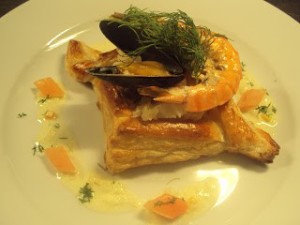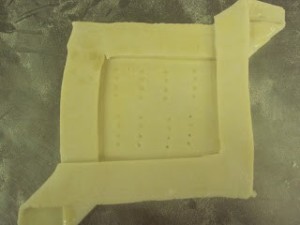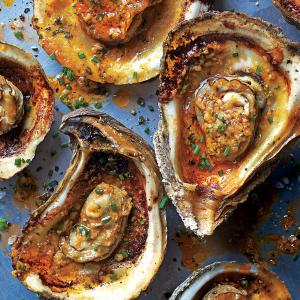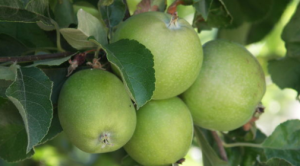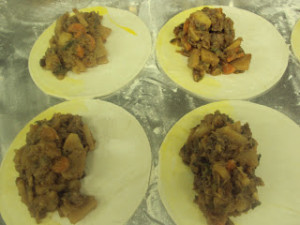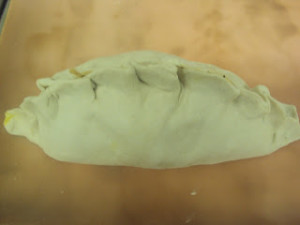It is National Beer Day, well across the pond in the USA it is, but I rarely need a reason to celebrate with a beer or cooking with one. Don’t be afraid to cook with beer, the Belgium’s have made an art of using beer much as the French would use wine. I think almost all aspiring food led pubs have included deep-fried fish in a beer batter or a steak and ale pie on their menus at some stage, and very nice they are too, more recently beer bread, ice cream and beer can chicken recipes have become popular with cooks and foodies. Virtually any recipe that calls for a liquid of any sort can be substituted with beer.
As a marinade for meat, fish or seafood, beer penetrates, flavours and tenderizes, it is less acidic than wine so the food can be left in the marinade longer, without cooking, and so increasing the flavour. In roasting or braising, beer used to baste the foods or as an ingredient in the basting sauce imparts a rich, dark colour as the sugar caramelise.
Beer is often thought of as a poor relation to wine but it is a complex drink made with up to twelve main ingredients, without including many additional aromatics. This leads to an incredible range, with around one hundred and thirty different styles of beer available to cook with and match with your food. So how do you pair food and beer? As with choosing a suitable wine you should try to complement with, contrast with or cut through the food flavours. Complementing matches similar flavours like the slightly sour, dark crust of a pizza can be complemented by the traditional toasted malt flavours of a Pilsner style lager. Pilsners also complement spicier foods and drink well with Mexican style salsas.
If you want to try contrasting the food and beer flavours try a really good quality dark chocolate with a glass of Belgium cherry or raspberry Kriek, fruity lambic beers originally brewed by monks. The last way to pair beer is cutting, in which the carbonation levels of the beer, can lift flavours and cut through rich creamy dishes, try a really hoppy English style IPA with a chicken korma. Beer and cheese are perfect companions, the famous Welsh Rarebit is little more than melted cheese and beer on toast and Beer and Cheese Soup is delicious. In batter a live ( not pasteurised ) beer can be substituted for yeast and water in the result is a crisp flavoursome coating for deep-fried cod, salmon, and squid.
As the choice at first might feel a little confusing it really is down to your own palate, treat blonde/golden beers and lagers as you would white wines and the darker, stronger bitters and porters as reds. As with wine when you boil and reduce beer you will increase some of the flavours and loose others, you will also evaporate off all of the alcohol. If you are using beer as a substitute for stock remember reducing a strong, intensely hoppy beer will leave a bitter residue. A sweetish mild or stout with little hopping will produce a fine gravy. A top tip is to reserve a little beer and add it when the cooking is finished to lift and enhance the beer flavours. A final note never cook with a beer you would not drink.
Light Larger style beers – are ideal for batters as the carbonation produces a light, airy result and the sugars caramelise to a deep golden colour.
IPA Indian Pale Ales – When pairing IPA with food there are three flavours to match your food to; the bitterness, the herbaceous hoppy notes and the rich caramel. Hoppy flavours are great with spices and at the opposite end of the flavour profile light fruits. Bitterness amplifies salty and umami flavours and has a cooling effect making a terrific match for spicy Asian cooking. The caramel flavours will compliment inherent sweetness in a dish like caramelized onions or the crispy skin of roast chicken. The hop acids and carbonation make IPA’s great palate cleansers to take on even the fattiest deep-fried dishes.
Traditional Ales – use in bread, pies and stews, the Belgium classic Carbonnade Flamande is very similar to a Beef Bourguignon with beer substituted for wine.
Stouts and Porters – Stout is often used in rich flavoured mustards and steamed steak and oyster pudding is a classic made with Guinness. Porters are dark brown in colour, sometimes almost black in the heavier roasted versions, their depth of rich flavour, medium body and lower level of bitterness mean they are a perfect match for grilled and barbecued food ( be it burgers, steaks, chicken, any kebabs or even seafood) will pair perfectly with a porter where the roasted notes in the beer really match up with any charred and caramelised flavours produced when cooking.
Pilzners – Pilsner is perhaps the most versatile beer to match food with. It has the strength of flavour to pair with Mexican, Thai and other fiery Asian foods, but it won’t overwhelm more delicate dishes like shellfish or fresh goat cheese. It’s great with burgers or barbecue and perfect with pizza. The hops and carbonation work to keep your palate clean and it can also be a wonderful accompaniment to very light desserts.
Wheat Beer – traditionally used in Waterzooi, a fish stew from the Flanders region of Belgium thickened with egg yolks and cream and the favourite of Charles V, the Holy Roman Emperor, born in Ghent. Wheat Beer is also ideal for batter mixes.
Speciality Beers – fruity lambic beers in chocolate cakes and puddings and raspberry or sour cherry kriek beers with roast duck and fowl.
This lovely recipe pairs two fantastic flavours with fresh mussels and is perhaps my favourite of all the mussel dishes I regularly cook. There is something about the combination of the pungent braised chorizo and aromatic, slightly bitter, beer with the cooking liquor of the mussels which creates a wonderful broth in which to dip great chunks of freshly baked crusty bread. For the beer I would naturally recommend Liberation IPA here in the Channel Islands but Adnam’s Broadside, Fuller’s London Pride or Moorland Old Speckled Hen all give great results.
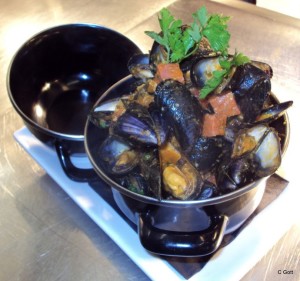
Mussels with Beer and Chorizo Sausage generously serves 6 people
2 kg fresh Mussels
140 gr Braised Chorizo
A good sized nugget of Butter
A slug of quality Olive Oil
6 large Shallots, peeled and thinly sliced
3 cloves of Garlic, peeled and crushed
300 ml of deep flavoured Beer
2 tablespoons Tomato Puree
A good handful of Parsley, washed and finely chopped
The juice of 1 freshly squeezed Lemon
Freshly ground Black Pepper
Allow 500 gr to 750 gr of mussels per person for a generous portion. To prepare your mussels first rinse them in plenty of cold running water and throw away any mussels with cracked or broken shells. Give any open mussels a quick squeeze, if they do not close immediately, throw away as well as they are dead and not to be eaten. Then using a small knife scrape the shell to remove any barnacles or dirt and pull out any beards by tugging towards the hinge of the mussel shell. If you intend to cook later that day, store in a plastic container in the bottom of your refrigerator covered with a damp tea towel.
In a large, heavy bottomed pan melt the butter and add the olive oil. Add the shallots and sauté for about ten minutes until they are soft and gently coloured. Turn up the heat and add the garlic, tomato puree, chorizo and a generous few turns of the pepper mill. Stir well and cook for two minutes. Pour in the beer, stir and bring to the boil before tipping in the mussels. Cover with a tight fitting lid and steam for five minutes until the mussels are all open. Remove the lid and simmer for two more minutes to slightly reduce the cooking liquor. I like plenty of the cooking juices to mop up with lots of crusty bread. Finish the mussels with the lemon juice and lots of parsley and serve.
 Tracy-Ann Oberman as his wife Golde is equally impressive. A feisty lioness who knows her old man better than he knows himself, it is an inspired pairing.
Tracy-Ann Oberman as his wife Golde is equally impressive. A feisty lioness who knows her old man better than he knows himself, it is an inspired pairing.






